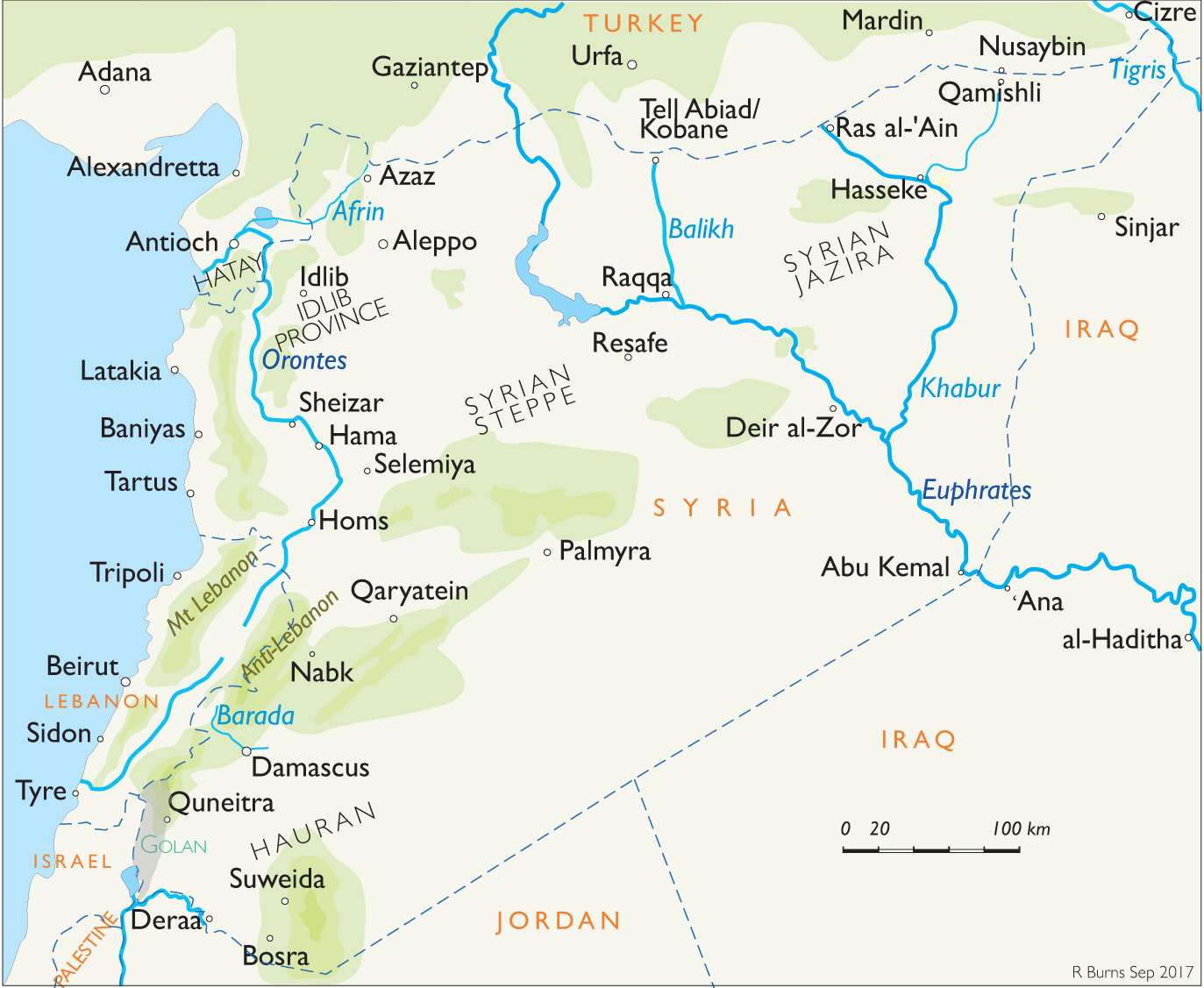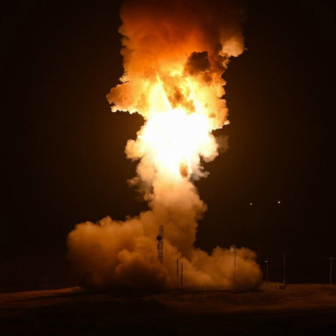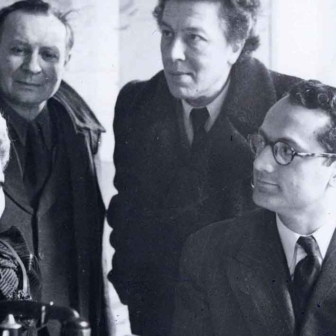The landscape of the Syria conflict has changed markedly over the past few months. One factor is Russia’s intervention to stiffen the Syrian government’s armed effort in collaboration with Lebanese Hezbollah and other Iranian-backed forces; another is the success of the Western-backed campaign against Islamic State, or ISIS, spearheaded by the retaking of Mosul. As a result, the Syrian regime has recovered much of the Syrian steppe, a former refuge for Islamic extremist forces with ready access to many parts of the country. With war-weariness in the civilian population running high, how close is the conflict to winding down? Do the many domestic players and their external backers still have surprises in reserve?
Numerous frontlines still need to be resolved before we see anything approaching a stable outcome across Syria, as does the question of who will control many existing and likely “liberated” areas. But there are reasons to believe that the Syrian regime and its Russian and Iranian allies have locked in a favourable swing in the conflict’s direction. While ISIS has used every desperate ploy to delay the inevitable, it is now virtually finished west of the Euphrates, clinging only to small, isolated areas east of Hama and Homs.
ISIS elements are also holding out in some pockets of Raqqa city (amounting to perhaps 20 per cent of the urban area) against the Syrian Democratic Forces, a predominantly Kurdish grouping with on-the-ground backing from US special forces. The role of the Kurds on that front highlights the wider conundrum posed by Turkey’s unwillingness to accept large swathes of Kurdish-controlled territory across northern Syria and the Syrian Jazira. Whether Ankara has reached an understanding with Washington about a future Kurdish presence is unclear, but Turkey has moved decisively to take a major role in restoring normal life north of the Euphrates. None of the players seems to envisage a return to Syrian control.
Turkey has also made particularly vigorous efforts to ensure that the Afrin Valley, east of Turkey’s Hatay province, does not come under Kurdish control.

Map of Syria by Ross Burns
In the Lower Euphrates, where many of the oil and gas fields are located, US-backed forces were competing with Syrian units to take the town of Abu Kemal, the crossing point to Iraq. Although the United States made a sudden decision to withdraw, it seems to have established a new red line to prevent the Syrians from crossing the Euphrates. It is difficult to define what US interest might be served by this gambit: does it envisage a “Shia corridor” stretching from Iran across Iraq, southern Syria and on to Lebanon — a new tentacle of Iranian influence — as some observers argue? This imaginative scenario seems poorly based in terms of practicality.
A little further up the Euphrates, the town of Deir al-Zor (the main base of the Syrian oil and gas extraction industry) is also largely back in government hands. Backed by Russian air power, the Syrian army has steadily rolled back the ISIS contingents holding out on the steppe east of Palmyra. Russia has been quick to wheel in logistic support so that Syrian forces can move into the Syrian Jazira, north of the Euphrates, and along the Khabur River.
In southwestern Syria, from the Jordanian border up to Damascus, firefights involving a range of groups are reasonably common but short-lived. Further north, east of Damascus, al Qaeda offshoots are still holding on within two kilometres of the eastern walls of the old city. This conflict has perhaps lost some of its intensity but none of its persistence.
To the west of the capital, and also in the mountain crossings into Lebanon to the north, via the Anti-Lebanon Range, exchanges of fighters under “de-confliction” agreements have taken much of the intensity out of long-simmering firefights. The process has been managed within the broad framework of the multi-party Astana talks, often under Russian and international humanitarian supervision.
The final, and by far the toughest, challenge is in the area largely covered by Idlib province, between Hama and Aleppo. Many fighters (now virtually all al Qaeda–aligned) have been consigned to this zone following the de-confliction agreements reached around Damascus, Homs and Aleppo.
For the moment, the Syrian regime seems to be treating this pocket of the overall conflict as a too-hard case, perhaps confident that the fighters will weary of their internal rivalries, wear out the patience of the two million civilians trapped inside, and take their turn at the end of the queue for de-confliction. The latter would require Turkish cooperation to prevent the free passage of arms, funding and personnel across the border. Ankara’s initial tolerance of ISIS operations across the northern Syrian border eventually led to a series of brutal ISIS bombings in Turkish cities; a more positive role in a reconstruction phase might now be a better option.
Dismantling these confrontations would be difficult enough if they could be sealed off from the outside world. But it is external backers that have made these conflicts possible and sustained them. We would be fooling ourselves, though, if we believed that outsiders can now simply snap their fingers and call off the fighters, allowing peace suddenly to descend. The fall of Aleppo and the rolling back of ISIS have been important turning points but another factor is required.
Syrians themselves, who have spent more than six agonising years watching their country being torn apart, would have to accept that their hopes of outside intervention to implement the dreams of the peaceful demonstrators of 2011 are not going to be fulfilled. Well-meaning countries, mainly in the West, made numerous calls for Bashar al-Assad’s regime to dissolve itself. This stoked a confrontation that rapidly turned violent, providing platforms for numerous externally backed groups, whose ambitions were in many cases even more vicious than the regime’s.
Nikolaos van Dam, who has been following the politics of Syria since his posting as a Dutch diplomat in Damascus four decades ago, has recently published a uniquely well-informed analysis of the course of the conflict. Van Dam reminds us of how dangerous it was for Western leaders to let hearts overrule rationality on Syria, giving the impression to Syrian protesters (and later the civilians who tolerated the presence of armed insurrections) that help was coming. In van Dam’s words, Western politicians “unintentionally contributed to prolonging the war and helping Bashar al-Assad move towards partial (or total) victory.” It is a perfect case of the old “ethical war” dilemma: the desired outcome may be morally right but is it ethical to promote it without making an informed calculation of whether it can be delivered without even worse suffering?
In Syria’s case, we now have the answer. From September 2015 on, the regime felt compelled by the strength of the rebels’ offensive in the Orontes Valley to invite the Russians and the Iranians to scale up their support for Syria’s own forces. From that point on, there was no chance that the regime could be persuaded to deal other domestic players into the power equation that had long locked Syria’s generals and intelligence chiefs in a Faustian pact with the Assad family. As a result, the levers for positive intervention by the international community are virtually non-existent, save for working through Russia and Iran.
With no common factor joining the postwar ambitions of the regime and those broadly grouped under the “coalition,” numerous flashpoints may still ignite. The embers of lingering confrontation could still be fanned by wishful thinking, even by the best-motivated outsiders. Any thoughts that the intensity of the confrontation can be fixed by lopping off bits of Syria, for example, should immediately be set aside. The integrity of Syria has to be a common starting point if the present conflict is not to be an abundant source of new conflicts for decades to come.
While the endgame may still be some way off, for the exhausted and demoralised people of Syria it can’t come soon enough. In a situation in which Syrians might increasingly be asking themselves whether the struggle was worth it, it is too late simply to hope for miracles. ●




